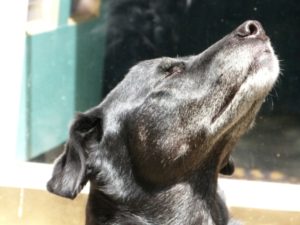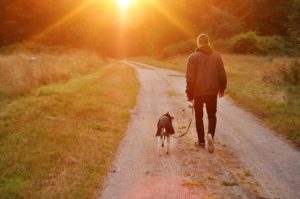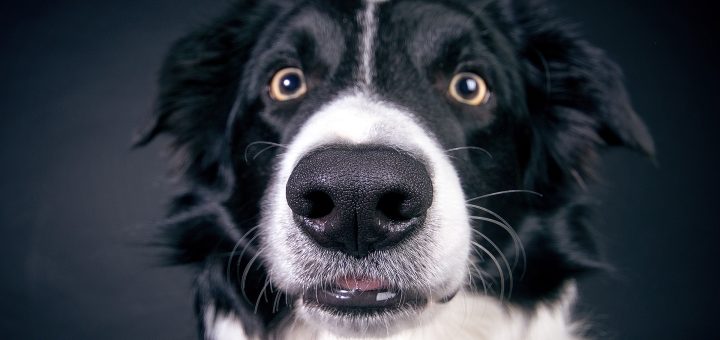The temporary closure of dog parks and more people staying at home as a result of the Covid-19 Pandemic means we are now seeing an increased number of people out walking their dogs throughout the day and night.
This is great for the usually yard bound bored dog, however it is also reported an increasing number of dog attacks. Not only on other dogs, but also our wildlife including Koalas as some pet owners refuse to keep their dogs on lead.
For pet owners who walk their dogs on a regular basis know the other regular pooches on their stroll, who to stop and say hello to and who to avoid. Now we are spotting dogs (and even families) we have never laid eyes on before, even with excited kids on bikes and scooters. Some of these dogs emerging from their yards may have had limited socialisation with other dogs, they are seen straining on leads with excitement. Maybe the owner figures it’s easier to just let them off leash?
This can be a dangerous situation for you and your dog if one rushes at you. What if your dog is not friendly, shy or you have just rescued them. The last thing anyone wants to experience or witness is a dog attack. Spending time with your dog should be a calming and pleasant experience for both of you.
After learning of two dogs in my own suburb that have been attacked, one fatally over the Easter break I decided to draw again on a workshop I completed called “The Complete Dog” presented by Jenny Golsby of “Complete Canine Communication”. It is a 2 day program covering various topics including nutrition, reactiveness, development, stress, communication, calming signals, benefits of harnesses and long leads, walking, the importance of sniffing and so much more.

So what am I actually suggesting here? That we don’t need to exercise our dogs? No not at all, we just need to change our traditional ideas on what exercise is and the way we do it. Dogs are such amazing and accommodating creatures that will do nearly anything that we ask just to make us happy. But the question is, are they happy too?
After completing the workshop, I proceeded to change the way I “exercised” my dogs. I no longer take them for long brisk walks. We now enjoy a stroll, allowing plenty of time to sniff every post, branch & shrub. But now with the latest stint of attacks, the last thing I need them to experience while they are enjoying this calming moment is to be jumped by an off leash dog. So I have opted to reduce our walks to once a week (not in the hot dog zone) and replace the other days with bike rides with Amber and Indy in their little trailer.
I know I can see you thinking why do I let them just stand there sniffing a shrub when we should be burning off energy right? Ok well let’s look at us humans for a minute. Certain scents create individual feelings and imagination for us right? Well imagine if books were interactive! Every paragraph had a scent waft from the pages to help imagine that scene; walking through a cottage garden, sitting at a cafe in Paris, walking down a dark alleyway alone. That scent may bring on a sense of calm, happiness or uneasy.
For dogs sense of smell gives them an even far greater sensory than it does for us, in fact up to 300 million times more! They use it to perceive their entire world. When sniffing another dog (yes even from a distance) they are starting to read what the other dog’s mood is; are they happy or aggressive, male or female, healthy or ill. The closer they get the more they read, they can recall another dog or human they have not seen in years just through sniffing alone and it is also enough to tell them where they have been! Basically all that sniffing takes a lot of energy draining brain power which in return results in a calming effect.

I asked Jenny from Complete Canine Communication for her thoughts on “why dog attacks occur and how to avoid them”
Dogs can become reactive when they don’t have their needs met, are unable to make good choices and have continuous overused and unrealistic commands barked at them. Being unhappy, in pain, experiencing confrontation, confusion or excitement will trigger behaviours that are not necessarily advantageous for the owner or the dog. Predatory behaviours and excessive exercise including repetitive activities like ball chasing, fast play and fast running increase arousal chemicals in the brain and body. These changes in the brain and body, over time will certainly have an effect on a dogs behaviour when situations or events present themselves. We must also remember that the brain preserves unpleasant memories as a way of protecting us against future life-threatening or negative events. Memory is like a computer database or filing cabinet; a memory is triggered, a search of the database is done, the memory is retrieved, recalled and acted upon.
We also need to think about the verbal and non-verbal ways in which a dog communicates. Let’s look at the non-verbal form of communication called “Calming Signals”, a phrase coined by Turid Rugaas, the International Dog Trainer and my mentor from Norway. “Calming Signals” involves using every part of the body including ears, eyes, tail, movement, stillness and expression. These signals may be used one at a time or together to express or communicate how they are feeling at any given time. On a walk or out in a social setting they would normally communicate many “Calming Signals” to calm themselves or another dog, express feelings of being uncomfortable, when social distancing is not adhered to and to simply have an everyday conversation with others around them. “Calming Signals” is their way of communicating. All dogs understand this language but unfortunately when restricting equipment, short leads, unrealistic control and unsettling past experiences have occurred, manners are put to the side and defending or attacking is a much better option for survival. Over time dogs can give up using “Calming Signals” and ultimately these dogs will no doubt end up provoking or finishing encounters while out walking.
Sadly, too many people are still being taught to ensure dogs are trained to follow their lead instead of observing and allowing the dog to express itself naturally and help it make decisions that are positive for its health, wellbeing and happiness. Avoiding confrontation means letting go of the “control freak” in you and allowing dogs to make choices. You may be surprised when they choose not to walk near every dog that comes their way and instead curve, letting the other dog know they mean no harm and they are happy to continue their sniffing walk. This is a great example of a “Calming Signal”. We don’t stop and chat to every person we meet, so why is it that we assume our dogs do? And let us not forget that some of us are more social than others. It is also important to look closely at the equipment we are using. Dogs need to be comfortable and able to move and express themselves while they are out exploring. Today we see all sorts of gadgets on dogs, these include pinch or prong collars, electric collars, check chains, martingales, muzzles, haltis, ill-fitting harnesses and even the flat collar. The structure and function of the dog’s neck is especially important, and we must protect it, not to mention respect it.
And one final question, “why do we need to change the way we exercise our dogs”?
Empathy for the species I chose to live with led me to observe what dogs love to do. They love to sleep, sniff, explore, be curious, experiment, have friends and take things slowly. Nikki put it so beautifully when she asked us to imagine books being interactive. What a beautiful thought and exactly how dogs love to spend their day.
Walking or running our dog around the block or in the same park every day is not enriching for dogs. They need new and interesting activities, activities to indulge all their senses to help calm their body, calm their mind and fulfill their needs. You will find over time that the very things that once triggered the dog will be less exaggerated and the world around them becomes slower and pleasant. Exercise means enjoyment and there is nothing more enjoyable than watching a dog on a good fitting Harness and a long 4 or 10 metre lead, with its head down walking slowly sniffing the ground, bushes and air or finding treats, toys and items you have hidden in the garden or losing a friend for them to find in the park. Diversity makes life interesting.
And when we stop trying to make dogs into something they are not and respect them for who they are, only then will we begin to see less reactive dogs and ultimately, less encounters. Activities and exercise should be pleasant for the whole family and this includes the dog.
So our message is, if you are taking your dog for a walk, why not just try loosening that lead, go on you can do it….let that lead smile, quit tugging it and for goodness sake just let them have a sniff!

Author Bio: Nikki is pack leader at Pressplay Pets, a blog for the modern age pet parent interested in health & care, news, reviews & personal accounts of unconditional love & at times heartfelt pain of pet parenting. She is also proud mum to cute and cheeky Papillons ‘Amber’ and ‘Indy’!
Follow Pressplay Pets blog:
Follow Instagram, Facebook and Twitter
Pressplay Pets a blog for the modern age pet parent interested in health & care, news, reviews & personal accounts of unconditional love & at times heartfelt pain of pet parenting!




